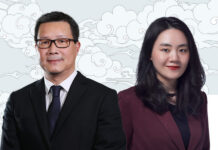The Supreme People’s Court set up a specialized IP tribunal on 1 January 2019, which takes the patent and other intellectual property (IP) civil litigations and administrative appeals involving sophisticated professional skills coming from the three IP courts and 19 IP tribunals with cross-regional jurisdiction around the country.

Chang Tsi & Partners
Managing Partner
This move makes patent trials and other IP dispute trials involving sophisticated skills much more professional and consistent. In line with the improvement of the IP trial system, Chinese courts also make great efforts in accelerating the trial speed, increasing the compensation amount, and making it easier to enforce the judgment.
China is now becoming the main battlefield of patent disputes for multinational companies (MNCs). This article analyzes litigation strategy and explores how to safeguard the commercial interests of a company through patent infringement litigation.
When the patent right is infringed upon, the owner of the right shall decide whether it’s necessary to bring a lawsuit based on the number and quality of the patents, the impact of the infringement on the market, and the strength of the infringer. If necessary, the right owner shall choose the right infringer, the right court of jurisdiction, and decide on the number of cases and the amount of compensation to seek, and make full preparation so as to make sure that the litigation serves the purpose of safeguarding commercial interests instead of undermining those interests.
Decide whether it’s necessary to bring a lawsuit and determine the purpose of litigation. To the patentee involved in production, operation and patent exploitation, where the competitor has encroached upon the right owner’s market share through patent infringement, and cease-and-desist letter and administrative complaint fail to stop the infringing behaviour, it is necessary to tackle the infringement through litigation to clean up the mass and seek reasonable compensation.

Chang Tsi & Partners
Patent Attorney
The patentee involving in non-practising entities and profit on the patent licence may issue a cease-and-desist letter or notification letter, and negotiate with the infringer on patent license. If the infringer refuses to negotiate and does not stop the infringement, the patentee may choose the most available infringer to sue and issue notification letters to other infringers, forcing the accused and other infringers to seek license and pay royalty.
Choose the right infringer to sue. Where there is more than one infringer, the patentee should choose the right infringer(s) to sue based on the following considerations:
First, infringement scale. The infringer who commits large-scale infringement and has significant impact on the market share is the right one to sue. The litigation against such infringers can effectively restrain the infringement and clean the market.
Second, the ill intention of infringement. Though the patent law in force does not provide for punitive damages, the ill intention of the infringer is one of the considerations that the judge will take into account when deciding on the damages. Only civil litigation can effectively restrain the infringement of the infringers of ill intention who continue to commit infringement with the full knowledge of the nature of the infringing behaviour, and who fail to respond to the warnings.
Third, the ability to make compensation. The litigation cost is significant, which includes the expenses relating to investigation and stopping the infringement, so when there is more than one infringer whose infringing scale and intention are similar, it is recommended to sue the one with higher capability to make compensation.
Choose the right place of litigation. The right owner may sue the infringer in the court in the place where the defendant resides, or the place where the infringement takes place, or where the outcome of infringement takes place. In cases of invention patent and utility model patent infringement, the second instance trial is taken by the IP tribunal of the Supreme People’s Court, and in this light, local protection should not be given too much weight.
However, in the cases of design patent infringement, the patentee needs to collect evidence by purchasing the infringing products through on-site notarization(s) and/or the website notarization(s), and chooses the best place to sue.
Determine the number of cases. Where the single infringer has infringed upon more than one patent, the patentee should decide on the number of cases based on the purpose of the litigation. If the purpose is to drive the competitor out of the market, it is recommended to bring multiple lawsuits. Even if the competitors respond with force, as long as the right owner wins in at least one case, the purpose is served.
Where one single patent is infringed upon by multiple infringers, the patentee may choose to sue a fewer number of infringers. The patentee concentrates energies on a few infringers conducting a larger scale of infringement, with serious ill intention and high capability to make compensation. Upon obtaining a favourable judgement, the patentee can issue letters to other infringers asking them to stop infringement and ask for reasonable compensation. In this way, the patentee is able to maximize the effect of combating the infringement with minimized cost.
Decide on a proper amount of compensation. The patent law in force provides that the statute damages is less than RMB1 million (US$148,000). If the owner of the patent right is able to present evidence sufficient to prove that the gain from the infringement far exceeds RMB1 million, the owner may claim a compensation higher than the statutory damages.
Make full preparation. The preparation includes analysis of patent stability, analysis of the patent infringement, investigation and evidence collection, definition of litigation strategy, preparation of complaint and evidence, lawsuit procedures, and sufficient manpower and fiscal budget.
Simon Tsi is the managing partner of Chang Tsi & Partners. He can be contacted on +86 10 8836 9999 or by email at simontsi@changtsi.com
Nancy Qu is a patent attorney at Chang Tsi & Partners. She can be contacted on +86 10 8836 9999 or by email at nancyqu@changtsi.com





















